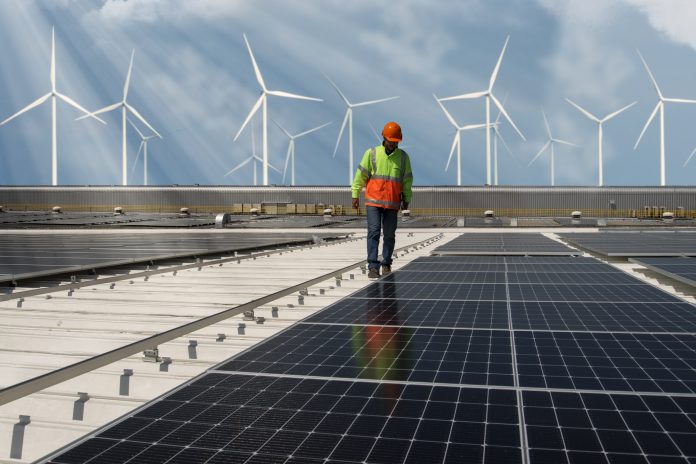The European Commission has announced allocating over €3.6 billion to 41 large-scale clean technology projects as part of the EU innovation fund
These projects, which align with the REPowerEU Plan and aim to reduce Europe’s reliance on Russian fossil fuel imports, encompass various industries such as cement, steel, advanced biofuels, sustainable aviation fuels, wind and solar energy, and renewable hydrogen and its derivatives.
The funding aims to facilitate the decarbonisation of challenging sectors in the European economy.
Geographical and environmental impact of EU innovation fund
The selected projects span 15 EU Member States, including Austria, Belgium, Croatia, Czechia, Denmark, Finland, France, Germany, Greece, Ireland, Italy, the Netherlands, Portugal, Spain, and Sweden, as well as Norway.
All supported projects are expected to commence operations before 2030 and have the potential to collectively avoid approximately 221 million tonnes of CO2 emissions within their first decade of operation.
This is not surprising considering that 88% of Europeans have said to have wanted more renewable energy projects due to fear of climate change.
Project categories and funding details of EU innovatation fund
The 41 projects were chosen in response to the third call for large-scale projects and are categorised under four topics: “general” decarbonisation, industry electrification and hydrogen, clean technology project manufacturing, and mid-sized pilots.
- “General” decarbonisation: Eight projects with a total worth of €1.4 billion have been approved. This category includes three refinery projects and five related to the cement and lime sector. The projects are distributed across Belgium, Croatia, Germany, Greece, the Netherlands, Portugal, and Sweden.
- Industry electrification and hydrogen: Thirteen projects with an investment of almost €1.2 billion have been selected. This category comprises six projects focusing on renewable hydrogen production and seven projects dedicated to hydrogen utilisation in the chemical industry, refineries, and steel sectors. The projects are located in Austria, Belgium, France, Germany, the Netherlands, Portugal, Spain, Sweden, and Norway.
- Clean technology project manufacturing: Eleven projects, valued at nearly €800 million, have been granted funding. This category encompasses four projects related to electrolyser manufacturing, four projects focused on batteries (including recycling), and three projects centered around photovoltaic panels and modules. The projects are in Belgium, Denmark, Germany, Finland, Spain, Sweden, and Norway.
- Mid-sized pilots: Nine projects with a funding of €250 million have been approved under this category. The projects include two wind energy projects, two ocean energy projects, two projects in the chemicals sector, and projects in the glass sector, carbon capture, and e-fuels. They are distributed across Czechia, Denmark, France, Germany, Ireland, Italy, the Netherlands, Spain, and Norway.
Selection criteria and future plans of EU funding
Independent experts evaluated the projects based on five criteria: reduction of greenhouse gas emissions compared to conventional technologies, level of innovation, operational, financial, technical maturity, scalability, and cost-effectiveness.
In addition to the 41 projects selected in the EU innovation fund, promising yet less mature projects will receive project development assistance from the European Investment Bank, with details to be announced in the fourth quarter of 2023.
The Commission plans to launch the next call for large-scale project proposals under the Innovation Fund by the end of the year, with an increased budget of €4 billion.
The innovation fund and its objectives
As one of the world’s most extensive funding programs for net-zero and innovative technologies, the EU innovation Fund is crucial in the European Green Deal Industrial Plan.
Financed through revenues generated by auctioning allowances from the EU Emissions Trading System (EU ETS), the fund has already allocated grants worth €1.1 billion and €1.8 billion in previous calls to seven and 16 projects, respectively.
This EU Innovation Fund aims to facilitate clean energy investments and the commercialisation of technologies that can decarbonise European industry while enhancing its competitiveness.
The grants bridge the cost gap between innovative and conventional technologies. The fund operates through regular calls for proposals and, in the future, competitive bidding procedures (auctions).
Revisions and implementation of EU Emissions Trading System
In 2023, the EU Emissions Trading System directive underwent revisions to bolster the EU Innovation Fund’s role in promoting clean tech and setting global standards.
These revisions include an increased budget and the introduction of new auctioning tools. Aligned with the REPowerEU Plan, the projects funded through this call contribute to the EU’s efforts to reduce Russian fossil fuel imports.
Implementing the Innovation Fund falls under the European Climate, Infrastructure, and Environment Executive Agency (CINEA) responsibility.
At the same time, the European Investment Bank (EIB) provides project development assistance to promising projects that require further maturity before receiving EU innovation fund grants.
Impressive application numbers and “Sovereignty Seal”
The call for projects attracted 239 applications, out of which 196 met the eligibility criteria for evaluation. Over 40% of the eligible projects successfully met all evaluation thresholds and may be considered for the “Sovereignty Seal,” a new quality label introduced by the EU.
This label recognises high-quality projects contributing to Strategic Technologies for Europe Platform (STEP) objectives.
With the allocation of substantial EU funding and the support of innovative clean technology projects, the European Union continues its commitment to sustainable development and the transition to a greener economy.











